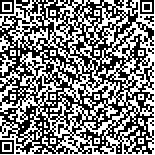周洪雨,孟兆祥,金星,等.卒中后认知障碍患者的执行功能特征及其早期预测标志物的探索[J].中华物理医学与康复杂志,2024,46(6):518-523
扫码阅读全文

|
| 卒中后认知障碍患者的执行功能特征及其早期预测标志物的探索 |
|
| |
| DOI:10.3760/cma.j.issn.0254-1424.2024.06.006 |
| 中文关键词: 卒中后认知障碍 急性脑梗死 执行功能 miR-146a-5p 炎症因子 |
| 英文关键词: Stroke Cognitive impairment Cerebral infarct Executive function miR-146a-5p RNA Inflammation |
| 基金项目:国家自然科学基金项目(82072533);扬州大学附属苏北人民医院青年基金项目(SBQN22017);江苏省扬州市科技计划(YZ2022099);扬州市政策引导类计划(国际科技合作)项目(YZ2022203) |
|
| 摘要点击次数: 2816 |
| 全文下载次数: 3676 |
| 中文摘要: |
| 目的 观察卒中后认知障碍 (PSCI) 患者执行功能特征及其在卒中急性期时血浆miR-146a-5p、白介素6(IL-6)、肿瘤坏死因子-α(TNF-α)的表达水平,并寻找能早期预测PSCI的标志物。 方法 从神经内科随访的急性脑梗死(ACI)患者中选取PSCI患者及卒中后认知正常(PSCN)患者各40例,分别纳入PSCI组和PSCN组。另招募同时期年龄相匹配的健康体检者纳入年龄相匹配对照组(AMC组)。采用执行功能量表[包括数字广度测试(DST)、Stroop色词测试(CWT)、连线测试B(TMT-B)及语义流畅性测试(SFT)等]评估3组受试者的执行功能情况,并检测3组受试者基线时血浆miR-146a-5p及IL-6、TNF-α表达量。应用受试者工作特征曲线(ROC)分析基线时患者血浆miR-146a-5p、IL-6、TNF-α含量及MoCA得分对PSCI的预测价值。 结果 基线时 PSCI组血浆miR-146a-5p表达量明显低于PSCN组和AMC组(P<0.05),PSCN组血浆miR-146a-5p含量显著高于AMC组(P<0.05);PSCI组血浆IL-6含量明显高于PSCN组和AMC组(P<0.05),PSCN组血浆IL-6含量亦显著高于AMC组(P<0.05); PSCI组血浆TNF-α含量明显高于AMC组(P<0.05),但较PSCN组无显著差异(P>0.05),PSCN组血浆TNF-α含量亦显著高于AMC组(P<0.05)。3个月后随访时,发现PSCI组DST、SFT得分均显著低于PSCN组和AMC组(P<0.05); PSCI组TMT-B耗时数、SIE耗时数均明显超过PSCN组(P<0.05)和AMC组(P<0.05)。PSCN组DST得分、SFT得分与AMC组差异均无统计学意义(P>0.05);PSCN组TMT-B耗时数明显超过AMC组(P<0.05),SIE耗时数较AMC组有增多趋势(P>0.05)。基线时血浆miR-146a-5P含量联合MoCA得分预测PSCI的曲线下面积(AUC)为0.9013,其敏感度为72.5%,在最佳临界点的特异性为97.5%。 结论 ACI患者无论是否进展为PSCI其执行功能均会出现某些方面异常,并以PSCI患者执行功能的受损程度较严重。高水平miR-146a-5p在ACI患者急性期能通过抑制神经炎症反应对其认知功能发挥保护作用,联合应用急性期miR-146a-5p表达量及MoCA得分能有效预测PSCI的发生。 |
| 英文摘要: |
| Objective To test the expression of miR-146a-5p RNA, interleukin 6 (IL-6) and tumor necrosis factor α (TNF-α) as markers for predicting post-stroke cognitive impairment (PSCI). Methods Forty cerebral infarction patients who had been followed up after 3 months formed a PSCI group, and another 40 who showed no post-stroke impairment formed the normal (PSCN) group. Forty healthy age-matched people were the AMC group. The executive functioning of each participant was quantified using the digital span test (DST), a Stroop color word test (SCWT), part B of the trail making test (TMT-B), and a semantic fluency test (SFT). Plasma expression levels of miR-146a-5p, IL-6 and TNF-α were also recorded. Receiver operating characteristics (ROC) curves were prepared to analyze the value of the miR-146a-5p, IL-6, TNF-α and Montreal cognitive assessment (MoCA) scores for predicting PSCI. Results At baseline, the average expression of plasma miR-146a-5p in the PSCI group was significantly lower than in the other groups, with that of the PSCN group significantly higher than the AMC group′s average. Plasma IL-6 content in the PSCI group was significantly higher than in the other two groups on average, with that in the PSCN group significantly higher than in the AMC group. The average TNF-α levels in both the PSCI and PSCN groups were significantly higher than in the AMC group. Three months later, however, the average DST and SFT scores of the PSCI group were significantly lower than those of the other two groups, while TMT-B and stroop interference effects (SIE) times were significantly longer. TMT-B and SIE times in the PSCN group averaged significantly longer than in the AMC group. At baseline, the area under the curve predicting PSCI of plasma miR-146a-5P combined with MoCA scores was 0.90, with a sensitivity of 72.5% and specificity at the optimal critical point of 97.5%. Conclusions A high level of plasma miR-146a-5p in the acute stage may protect an ACI patient′s cognitive functioning by inhibiting neuroinflammatory responses. Its expression level and the patient′s MoCA score can help to predict PSCI. |
|
查看全文
查看/发表评论 下载PDF阅读器 |
| 关闭 |
|
|
|